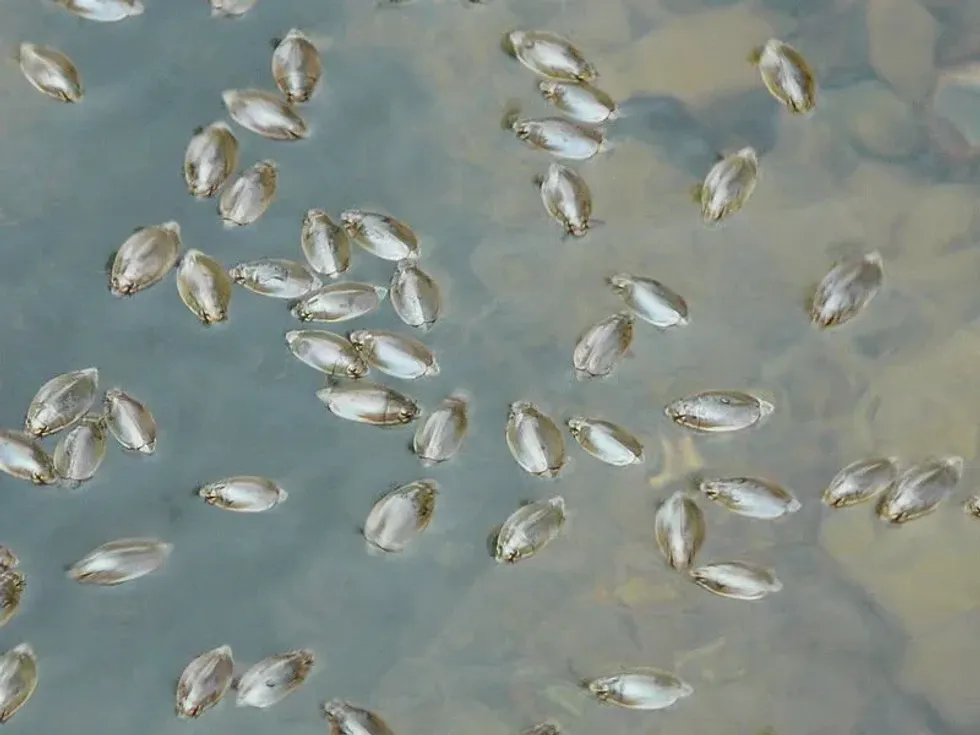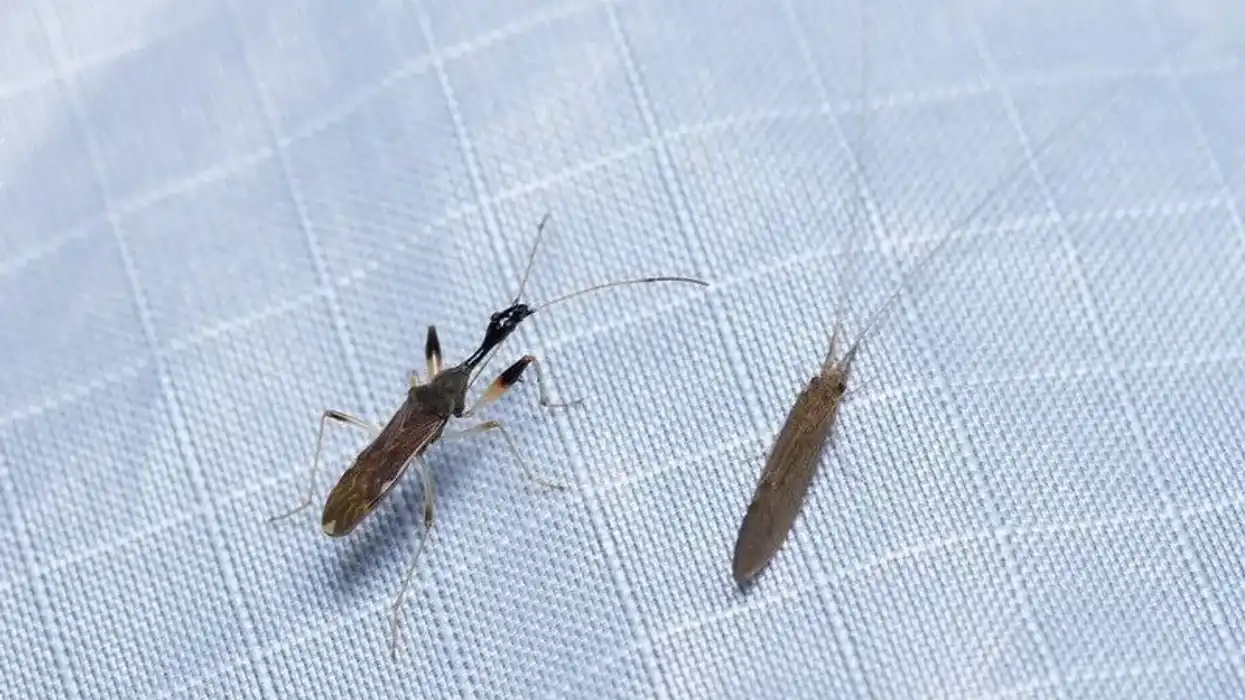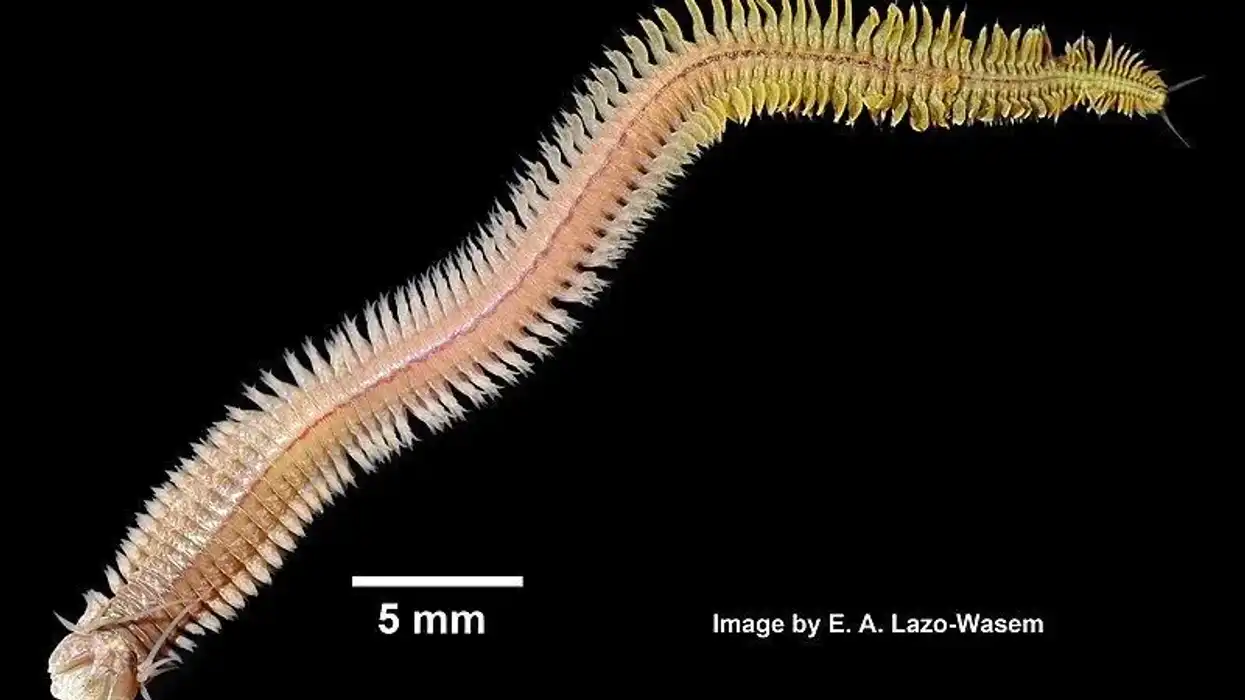Have you ever wondered about a tiny insect that whirls over the surface of a pond or river? They are none other than the Whirligigs Beetle.
They are the small aquatic insects seen swimming on the surface of the water in groups. They have some unusual characteristics.
Whirligig Beetle eggs are laid by adult females, who die immediately after the eggs are laid. Hence the life expectancy of the Whirligig Beetle depends on the mating season of the adults.
The diet of adult Whirligig Beetle comprises debris or organisms on the surface of the water. Whirligig Beetles carry an air bubble at the tip of their abdomen which ensures that they can dive to safety when confronted by a predator at the water's surface.
Out of their two eyes, one remains above water while the other remains below water. Do you wish to know more about Whirligig Beetle? Here are some fun and interesting facts about the Whirligigs Beetle species. After this, you may also look at our other articles on longhorn beetle facts and dung beetle facts as well.
Whirligigs Beetle Interesting Facts
What type of animal is a Whirligigs Beetle?
Whirligig Beetle (family Gyrinidae) is an insect that belongs to the family of Gyrinidae. Whirligig Beetle is usually seen swimming on the surface of the water.
These Beetles swim in circles when they feel alarmed, which gave them this name. They are found in almost every part of the world. Most of the species belonging to this family are similar in their appearance but the size may differ.
What class of animal does a Whirligigs Beetle belong to?
Whirligig Beetle is an insect that belongs to the Insecta class under the Gyrinidae family. Whirligig Beetle comes under the order Coleoptera. These Water Beetles are very common and usually found swimming on the surface of the water, swimming underwater when they are threatened. There are many species under this family and one is Dineutus americus.
How many Whirligigs Beetle are there in the world?
According to an estimate, there are over 1.5 million species of beetles, indicating the diversity of the genera. There is no accurate estimate regarding the total number of Whirligigs Beetles in the world. Whirligig Beetle is very common and found in almost every part of the world.
Where does a Whirligigs Beetle live?
Whirligigs Beetle usually live in freshwaters. They are usually found swimming on the surface of ponds, lakes, and freshwater bodies. They are found in North America, South Australia, and almost every part of the world where they carry an air bubble around with them which is placed at the tip of the abdomen.
What is a Whirligigs Beetle's habitat?
Whirligigs Beetle (order Coleoptera) is seen in aquatic habitats like rivers, streams, and ponds. They prefer calm bodies of water. They live in lotic (moving water) habitats. They are found in almost every part of the world.
Who does Whirligigs Beetle live with?
Whirligigs Beetle live in groups. They swim and whirl together in large groups around underwater plants.
How long does a Whirligigs Beetle live?
Whirligigs Beetle are small-sized insects and usually have a lifespan of 2-3 years which may vary according to the underwater plants that they live around.
How do they reproduce?
Female Whirligigs Beetles lay eggs just below the water surface around underwater plants. Larvae are hatched after 1-2 weeks. They lay 20-50 eggs. The larvae are predators and feed on aquatic insects and feed on aquatic insects. It crawls rather than swims.
What is their conservation status?
Whirligigs Beetle are very common and do not face any threats. They are found almost everywhere in the world. Hence, they do not face any extinction threats and have been assigned the conservation status of not extinct.
Whirligigs Beetle Fun Facts
What does Whirligigs Beetle look like?
Whirligig Beetles are insects that belong to the Gyrinidae family. They are metallic blackish or bluish-black. They are oval in shape and the middle and hind legs are short that are seen tightly close to the body while the forelegs are long and slender.
One common species among the beetle family is Dineutus americanus. They have two pairs of compound eyes, one is above the water and the other is below. They have a distinguishing feature from other species; short clubbed antennae.
How cute are they?
Whirligig Beetles are not very cute. They are tiny insects but are good predators. They do not look attractive.
How do they communicate?
Most pond critters communicate with each other using special chemicals.
How big is a Whirligigs Beetle?
Whirligig Beetles have an average height of 0.7-0.11 in (2.7-17 mm) and are very small-sized insects.
How fast can Whirligigs Beetle move?
Whirligig Beetles can move very fast. The middle and hind legs have paddle-like structures which help in high-speed swimming.
How much does a Whirligigs Beetle weigh?
Whirligigs Beetle is very small and very lightweight.
What are the male and female names of the species?
As a Whirligig Beetle is an insect, it is a species belonging to the Gyrinidae family. The males and females are known as male Whirligig Beetle and female Whirligig Beetle respectively.
What would you call a baby Whirligigs Beetle?
A baby Whirligig Beetle is called a larva.
What do they eat?
Whirligig Beetles are carnivores. They usually feed on aquatic insects and invertebrates. Larvae are also good predators and feed on aquatic insects. Adult Whirligig Beetles do not have many predators because they emit defensive chemicals.
Are they harmful?
Whirligig Beetles are not harmful to humans. Fishes and other predators do not attack or eat them because they emit a defensive chemical.
Would they make a good pet?
Whirligig Beetles are small aquatic insects. They are not very suitable for keeping a pet.
Did you know...
Whirligig Beetles can be called scavengers as they eat dead insects that are lying on the surface of the water and keep the water clean. They are called beneficial bugs. The odor produced by Whirligig Beetles is unpleasant for predators, but for humans, these are pleasant smells, like the smell of an apple.
What attracts Whirligigs Beetle?
Whirligig Beetles are attracted to lights. The light echo is detected by them. This is sometimes used to trap them.
Having your own Whirligigs Beetle
Whirligig Beetles usually keep a place neat. They are called beneficial bugs.
Here at Kidadl, we have carefully created lots of interesting family-friendly animal facts for everyone to discover! For more relatable content, check out these giant African millipede facts, or atlas beetle facts.
You can even occupy yourself at home by drawing one on our beetle coloring pages.










